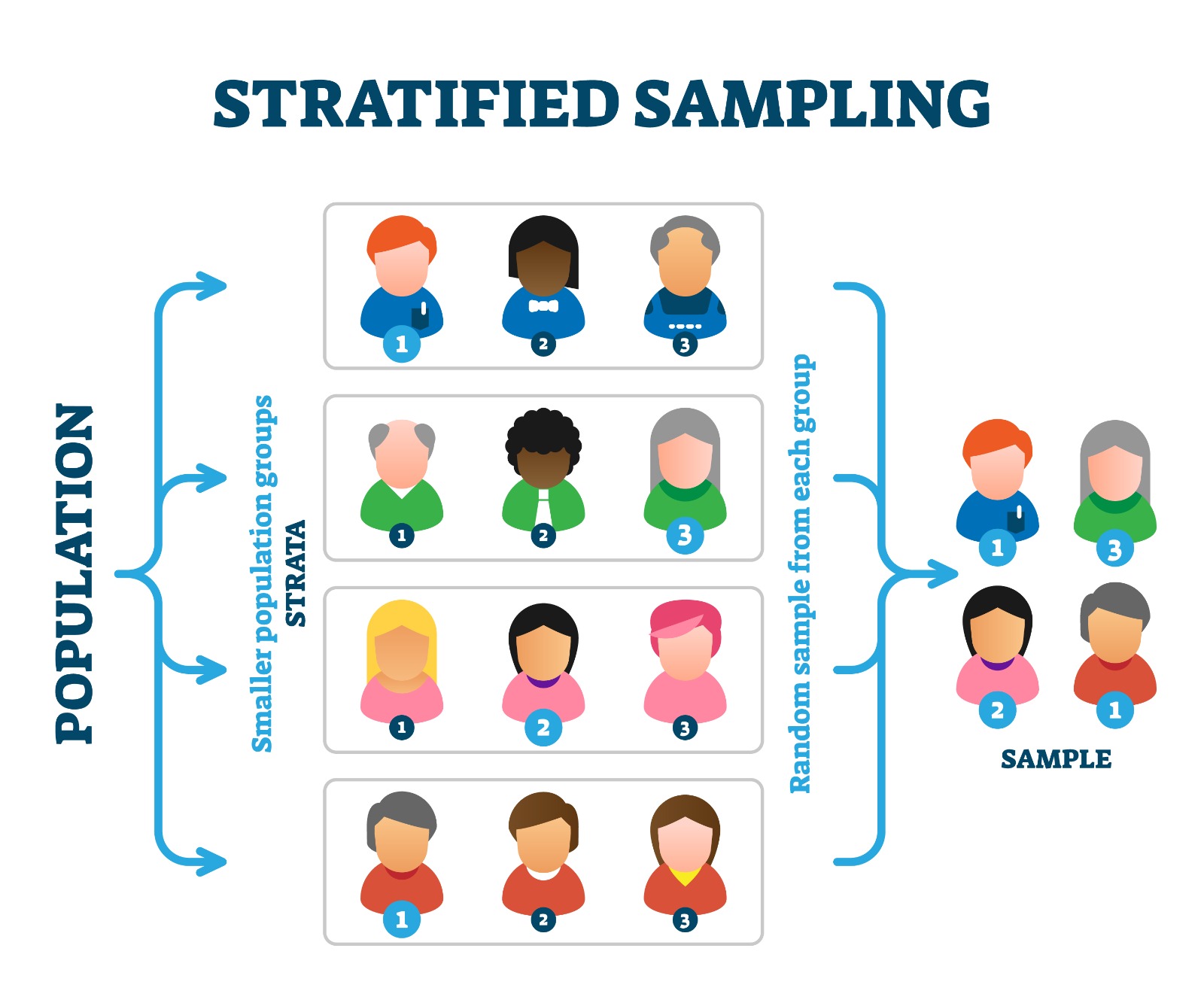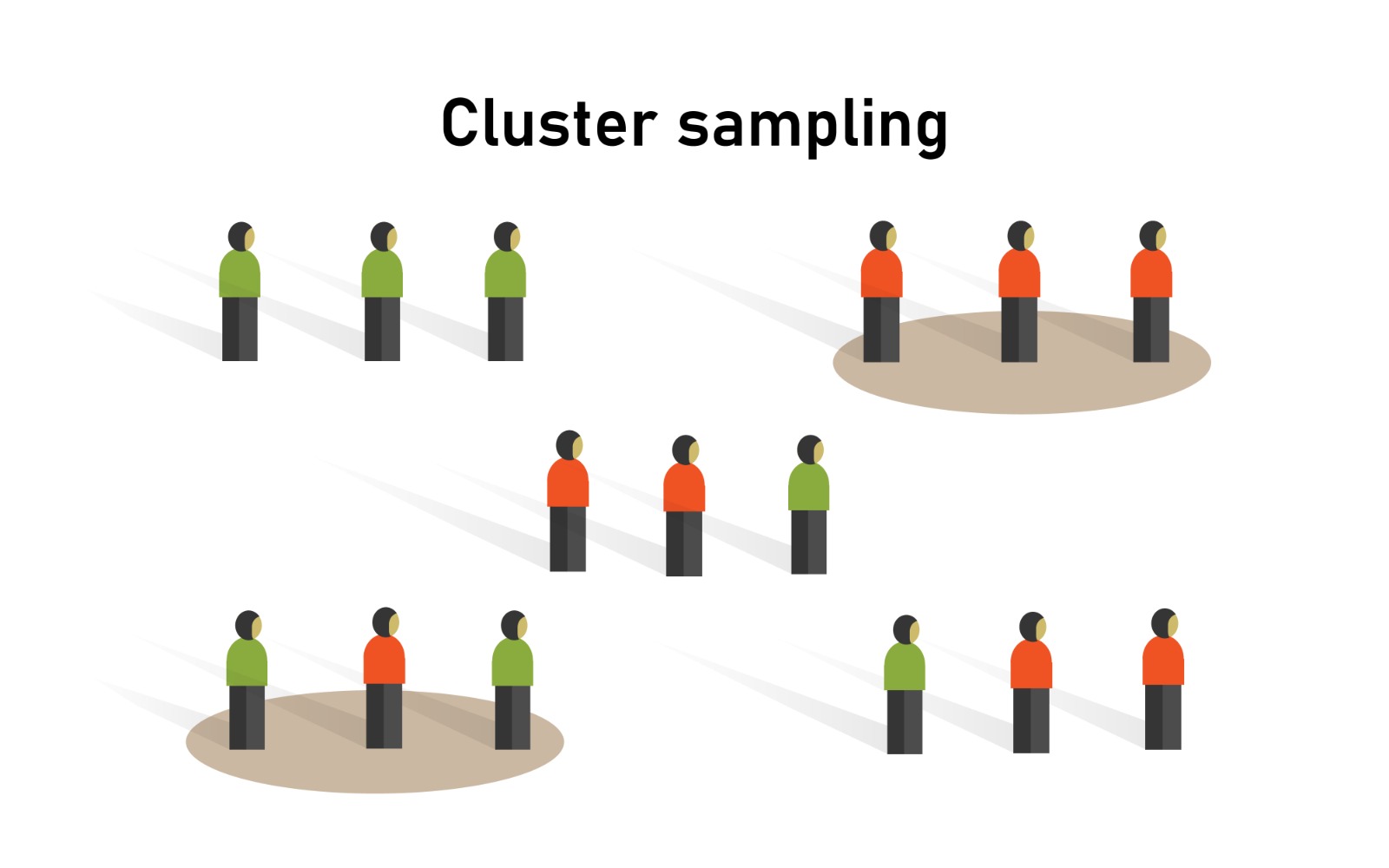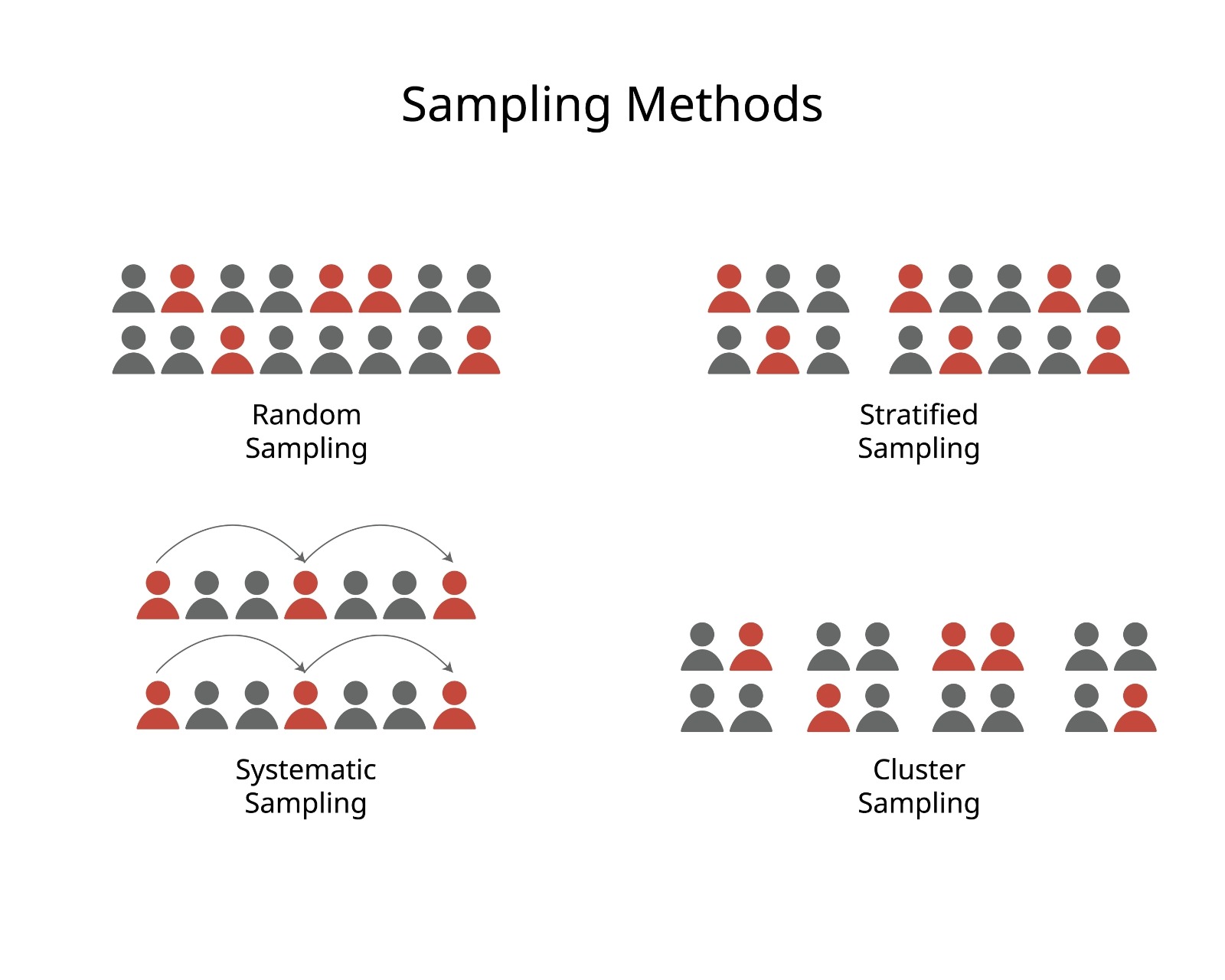Update: This article was last updated on 8th April 2025 to reflect the accuracy and up-to-date information on the page.
When conducting research, selecting a proper sampling method is crucial to obtaining valid, reliable results. Two common sampling techniques are stratified sampling and cluster sampling. While both aim to ensure that the sample represents the larger population, they differ significantly in how they achieve this. In this blog, we’ll dive deeper into each method, their uses, benefits, and potential pitfalls.
Stratified Sampling Explained

Stratified sampling ensures that specific subgroups (strata) of a population are adequately represented in your sample. These subgroups are often based on demographic or other relevant characteristics like age, gender, income level, education, etc. After dividing the population into strata, a random sample is taken from each stratum. Stratified sampling helps improve the accuracy and representativeness of the sample by ensuring that each subgroup is proportionally included.
How Stratified Sampling Works:
- Identify strata: Divide your population into distinct subgroups.
- Random sampling: From each subgroup, randomly select a proportionate sample.
- Data collection: Combine the data from all selected individuals to form your final sample.
For instance, a researcher might conduct a survey in randomly selected high schools to understand teenage eating habits. Instead of sampling from the entire teenage population, they use the schools (clusters) to simplify the process.
Types of Stratified Sampling
- Single-stage Cluster Sampling: The researcher selects clusters and studies all individuals within those clusters.
- Two-stage Cluster Sampling: The researcher selects clusters first and then randomly samples individuals within each selected cluster.
Benefits of Stratified Sampling:
- Cost-effective: It’s far more cost-effective and practical for large, geographically dispersed populations.
- Easy implementation: Especially useful in large-scale studies like national or regional surveys.
Drawbacks of Stratified Sampling:
- Higher sampling error: Because entire clusters are used, this method can introduce bias if clusters are not truly representative of the population.
- Less precision: The method may lead to over- or under-representation of certain population characteristics.
Recommended Reading: Top 10 STEM Skills for Kids in 2024
Cluster Sampling Explained

Cluster sampling is typically used when the population is too large and spread out to study each individual separately. Instead of sampling individuals from various subgroups, the population is divided into clusters, usually based on natural groupings like regions, schools, or companies. A few clusters are then randomly selected, and every individual within the selected clusters is included in the sample.
How Cluster Sampling Works:
- Identify clusters: Break the population into natural groupings (e.g., cities, neighborhoods, schools).
- Random selection: Randomly select some clusters.
- Data collection: Collect data from all individuals in the selected clusters.
For instance, a researcher might conduct a survey in randomly selected high schools to understand teenage eating habits. Instead of sampling from the entire teenage population, they use the schools (clusters) to simplify the process.
Recommended Reading: 7 Innovative Ideas for Fun Learning For Kids
Types of Cluster Sampling
- Single-stage Cluster Sampling: The researcher selects clusters and studies all individuals within those clusters.
- Two-stage Cluster Sampling: The researcher selects clusters first and then randomly samples individuals within each selected cluster.
Benefits of Cluster Sampling:
- Cost-effective: It’s far more cost-effective and practical for large, geographically dispersed populations.
- Easy implementation: Especially useful in large-scale studies like national or regional surveys.
Drawbacks of Cluster Sampling:
- Higher sampling error: Because entire clusters are used, this method can introduce bias if clusters are not truly representative of the population.
- Less precision: The method may lead to over- or under-representation of certain population characteristics.
Key Differences Between Stratified and Cluster Sampling
|
Aspect
|
Stratified Sampling
|
Cluster Sampling
|
|---|---|---|
|
Grouping Basis
|
Based on specific characteristics
|
Based on natural groupings
|
|
Sampling Method
|
Randomly sample individuals from each subgroup
|
Randomly select clusters and study all individuals
|
|
Population Structure
|
Best for heterogeneous populations
|
Best for large, geographically dispersed populations
|
|
Accuracy
|
High accuracy with reduced variability
|
More convenient, but higher potential for error
|
|
Cost
|
More expensive due to detailed subgrouping
|
More cost-effective for large populations
|
Additional Information on Sampling Methods

Sampling methods play a crucial role in ensuring that your research findings are accurate and generalizable to the larger population. While stratified random sampling, stratified and cluster sampling are two of the most common methods, others include random sampling, systematic sampling, and convenience sampling. Each method has its strengths and weaknesses, and selecting the right one depends on your research goals, population structure, and resources.
Recommended Reading: Using Technology to Connect with Your Kids
When to Use Each Method
- Use stratified sampling when the population is diverse and you need accurate, representative data from all subgroups.
- Opt for cluster sampling when working with a large, geographically dispersed population, where organizing individual sampling would be impractical.
Combining Stratified and Cluster Sampling
Sometimes, researchers may combine both methods to balance accuracy and practicality. This is especially useful in large-scale studies where accuracy is key, but logistical constraints make it difficult to sample from each subgroup.
For example, in a study of nationwide educational outcomes, researchers might first divide the population into geographical clusters (cluster sampling) and then stratify students within each cluster based on demographic factors like socioeconomic status (stratified sampling). This approach ensures a representative yet manageable sample and highlights the key differences in stratified vs cluster sampling when designing effective research methodologies.
Conclusion
Understanding the differences between stratified and cluster sampling helps ensure you select the best method for your research. Stratified sampling provides more accurate and representative results by ensuring that all subgroups are included, while cluster sampling offers convenience and cost-efficiency for larger populations. Whether you’re analyzing market segments or studying public health trends, choosing the right sampling method will improve the quality of your research.
Looking for a comprehensive parenting guide to ensure you are on the right track? Explore a wealth of parenting wisdom and educational insights in Moonpreneur’s blogs. Additionally, you can join our programs that nurture the next generation of innovators. Book a free trial now!


























You should highlight how to choose the right sampling method, especially for businesses or educational platforms that rely on data to make decisions. For example, Stratified sampling can help identify specific user groups more accurately, which leads to better product development and user engagement.
The article overlooks a key limitation: clusters can sometimes be too similar, which might affect the accuracy of the results. On the other hand, stratified sampling ensures diverse representation across all important subgroups, which can be crucial for studies that need more precise outcomes.